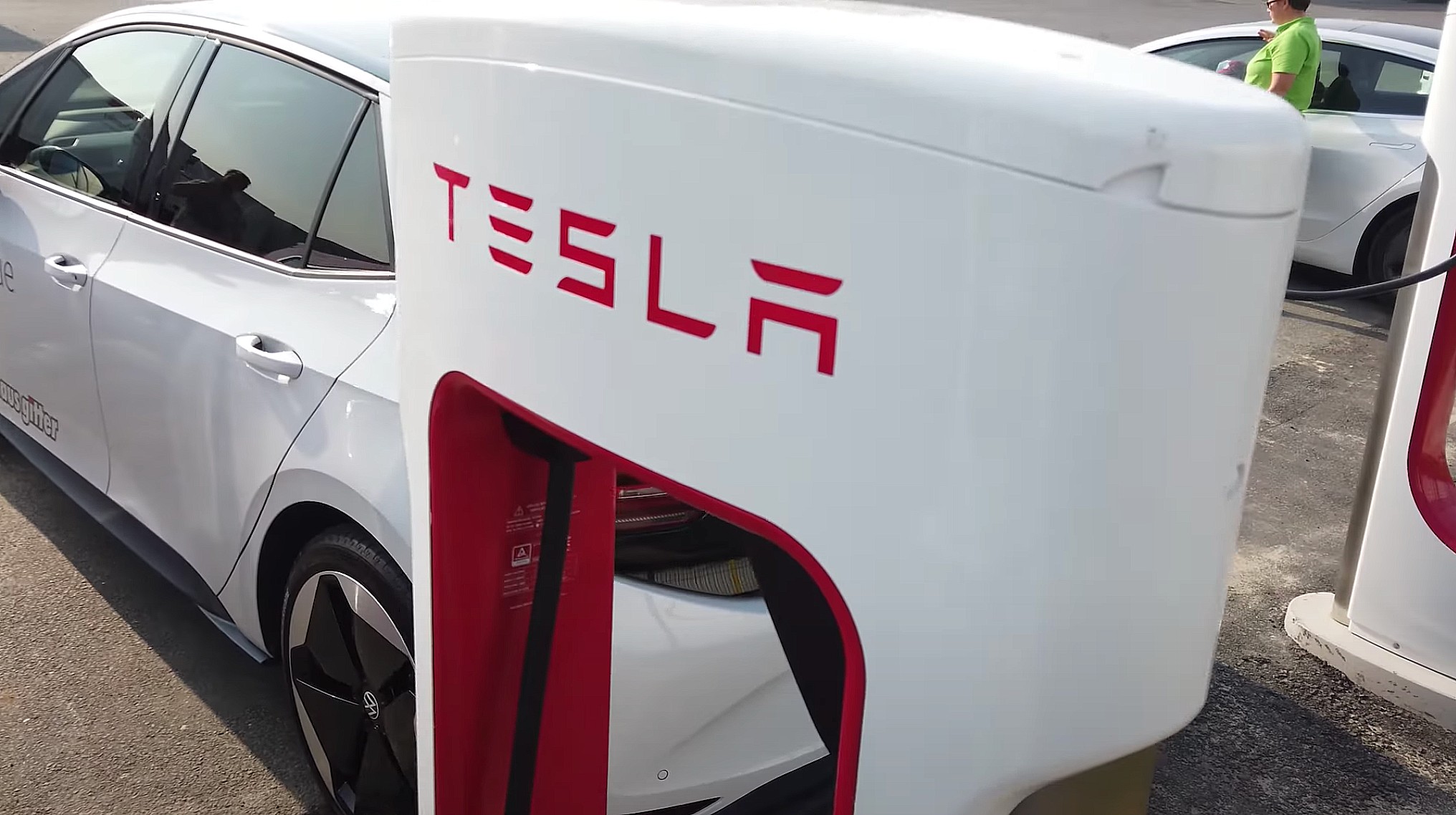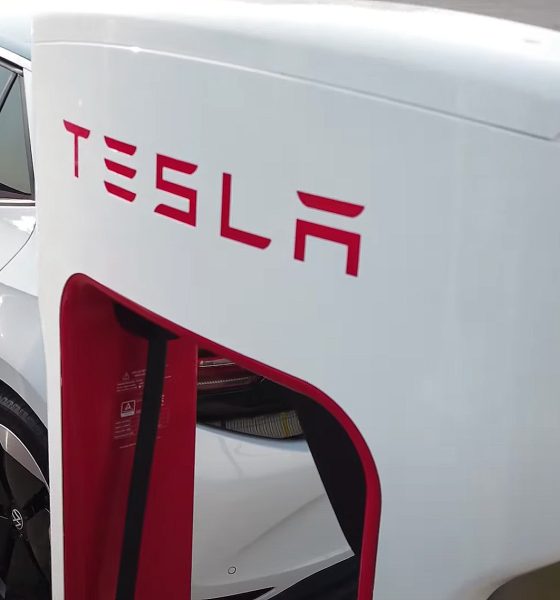

Energy
‘Buy Tesla’: Goldman Sachs defines investments as the Age of Oil closes
Goldman Sachs is preparing for the lapse of the Age of Oil, predicting big gains for the companies that continue to help expand the footprint of sustainable energy. As the world begins to move away from petrol-based fuels and favor renewable sources of energy, Goldman Sachs is allowing investors to look at some of the companies that are leading the charge in specific sectors, especially automotive, where Tesla has established itself as one of the more favorable investment opportunities for those who want to support electrification in ways outside of simply purchasing products. However, Tesla isn’t the only car company that is listed, and cars are not the only topic that Goldman analysts are bullish on as the Age of Oil begins its imminent demise.
“We remain above consensus on oil demand forecasts through 2025, and we still do not forecast peak oil demand this decade, though we expect oil demand growth beyond 2025 to be anemic, mainly due to electrification,” a team of Goldman Sachs analysts wrote in the sixth installment of the Future of Energy Demand Series. “We now expect transport oil to peak in 2026, but we see robust growth for petrochemicals and jet fuel offsetting declines in transport demand in 2025-2030.”
Goldman Sachs on The Future of Energy Demand ??
“Buy Tesla”$TSLA pic.twitter.com/H8lXZGwnyV
— David Tayar (@davidtayar5) April 14, 2021
Likely expected, commercial travel is going to be the largest hoop to jump through in the fight to decrease the usage of fossil fuels. Global logistics, travel, and business all currently depend on fossil fuels to keep things moving globally. Still, some companies are attempting to reduce their carbon footprint by experimenting with small-scale projects. UPS, for example, recently purchased all-electric Vertical Takeoff and Landing (eVTOL) drones that can help with deliveries. The BETA aircraft that UPS is experimenting with is capable of carrying 1,400 pounds of cargo with 250 miles of range. “This is all about innovation with a focus on returns for our business, our customers, and the environment,” Juan Perez, UPS Chief Information and Engineering Officer said.
The biggest disruptions for the global oil and petrol market come where electrification is becoming a more favorable option. The largest disruptions occur in the passenger vehicle market, where companies like Tesla and Volkswagen are Goldman’s biggest picks. The analysts see growing profit pools for the EV value change in these companies over the long term, especially as they are currently the two most-talked-about forces in the global electric car sector. Tesla’s Model 3 and Model Y are continuing to be two of the world’s most popular electric vehicles, while Volkswagen is rolling out its ID. family of vehicles that have been highly effective for many, despite some complaints about software.
Interestingly, Tesla’s energy side is still a relatively unmentioned player in the solar sector. It is rarely mentioned when analysts break down price targets for the company, even though its solar, battery, and energy storage products are among the most effective and affordable in the United States. Chamath Palihapitiya says some of the biggest gains in Tesla’s stock could come through its energy business.
Tesla Energy gets optimistic outlook from board member Kimbal Musk
“There are trillions of dollars of bonds, of CAPEX, of value sitting inside the energy generation infrastructure of the world, that is going to go upside down. When that goes pear-shaped, Tesla will double and triple again,” Palihapitiya said in January.
Nevertheless, the Age of Oil is slowly but surely coming to a close. The companies that continue to push their sustainable forms of energy are expected to come out as big winners, leaving fossil fuel and petrol-dependent companies on the backburner for the next several decades.
Disclosure: Joey Klender is a TSLA Shareholder.

Cybertruck
Tesla updates Cybertruck owners about key Powershare feature

Tesla is updating Cybertruck owners on its timeline of a massive feature that has yet to ship: Powershare with Powerwall.
Powershare is a bidirectional charging feature exclusive to Cybertruck, which allows the vehicle’s battery to act as a portable power source for homes, appliances, tools, other EVs, and more. It was announced in late 2023 as part of Tesla’s push into vehicle-to-everything energy sharing, and acting as a giant portable charger is the main advantage, as it can provide backup power during outages.
Cybertruck’s Powershare system supports both vehicle-to-load (V2L) and vehicle-to-home (V2H), making it flexible and well-rounded for a variety of applications.
However, even though the feature was promised with Cybertruck, it has yet to be shipped to vehicles. Tesla communicated with owners through email recently regarding Powershare with Powerwall, which essentially has the pickup act as an extended battery.
Powerwall discharge would be prioritized before tapping into the truck’s larger pack.
However, Tesla is still working on getting the feature out to owners, an email said:
“We’re writing to let you know that the Powershare with Powerwall feature is still in development and is now scheduled for release in mid-2026.
This new release date gives us additional time to design and test this feature, ensuring its ability to communicate and optimize energy sharing between your vehicle and many configurations and generations of Powerwall. We are also using this time to develop additional Powershare features that will help us continue to accelerate the world’s transition to sustainable energy.”
Owners have expressed some real disappointment in Tesla’s continuous delays in releasing the feature, as it was expected to be released by late 2024, but now has been pushed back several times to mid-2026, according to the email.
Foundation Series Cybertruck buyers paid extra, expecting the feature to be rolled out with their vehicle upon pickup.
Cybertruck’s Lead Engineer, Wes Morrill, even commented on the holdup:
As a Cybertruck owner who also has Powerwall, I empathize with the disappointed comments.
To their credit, the team has delivered powershare functionality to Cybertruck customers who otherwise have no backup with development of the powershare gateway. As well as those with solar…
— Wes (@wmorrill3) December 12, 2025
He said that “it turned out to be much harder than anticipated to make powershare work seamlessly with existing Powerwalls through existing wall connectors. Two grid-forming devices need to negotiate who will form and who will follow, depending on the state of charge of each, and they need to do this without a network and through multiple generations of hardware, and test and validate this process through rigorous certifications to ensure grid safety.”
It’s nice to see the transparency, but it is justified for some Cybertruck owners to feel like they’ve been bait-and-switched.
Energy
Tesla starts hiring efforts for Texas Megafactory
Tesla’s Brookshire site is expected to produce 10,000 Megapacks annually, equal to 40 gigawatt hours of energy storage.

Tesla has officially begun hiring for its new $200 million Megafactory in Brookshire, Texas, a manufacturing hub expected to employ 1,500 people by 2028. The facility, which will build Tesla’s grid-scale Megapack batteries, is part of the company’s growing energy storage footprint.
Tesla’s hiring efforts for the Texas Megafactory are hinted at by the job openings currently active on the company’s Careers website.
Tesla’s Texas Megafactory
Tesla’s Brookshire site is expected to produce 10,000 Megapacks annually, equal to 40 gigawatt hours of energy storage, similar to the Lathrop Megafactory in California. Tesla’s Careers website currently lists over 30 job openings for the site, from engineers, welders, and project managers. Each of the openings is listed for Brookshire, Texas.
The company has leased two buildings in Empire West Business Park, with over $194 million in combined property and equipment investment. Tesla’s agreement with Waller County includes a 60% property tax abatement, contingent on meeting employment benchmarks: 375 jobs by 2026, 750 by 2027, and 1,500 by 2028, as noted in a report from the Houston Business Journal. Tesla is required to employ at least 1,500 workers in the facility through the rest of the 10-year abatement period.
Tesla’s clean energy boom
City officials have stated that Tesla’s arrival marks a turning point for the Texas city, as it highlights a shift from logistics to advanced clean energy manufacturing. Ramiro Bautista from Brookshire’s economic development office, highlighted this in a comment to the Journal.
“(Tesla) has great-paying jobs. Not just that, but the advanced manufacturing (and) clean energy is coming to the area,” he said. “So it’s not just your normal logistics manufacturing. This is advanced manufacturing coming to this area, and this brings a different type of job and investment into the local economy.”
Energy
Tesla and Samsung SDI in talks over new US battery storage deal: report
The update was related by industry sources and initially reported by South Korean news outlets.

Recent reports have suggested that Tesla and Samsung SDI are in talks over a potential partnership to supply batteries for large-scale energy storage systems (ESS).
The update was related by industry sources and initially reported by South Korean news outlets.
ESS batteries to be built at Samsung’s Indiana plant
As noted in a report from Korea JoongAng Daily, the demand for energy storage systems has been growing rapidly in North America, thanks in no small part to the surge in AI investments across numerous companies. With this in mind, Tesla has reportedly approached Samsung SDI about a potential battery supply deal.
The deal is reportedly worth over 3 trillion Korean won (approximately $2.11 billion) and will span three years, according to The Korea Global Economic Daily. A battery supply deal with Samsung SDI could make sense for Tesla as the company already has a grid-scale battery, the Megapack, which is perfect for industrial use. Samsung SDI could simply supply cells for the EV maker.
Production of the batteries would reportedly take place at Samsung SDI’s joint venture factory with Stellantis in Indiana, which is currently under construction. Samsung SDI recently announced plans to use part of that plant’s EV lines to produce cells for ESS, with a targeted capacity of 30 GWh by the end of next year.
Tesla and Samsung’s partnership
At present, only a handful of manufacturers, including Korea’s LG Energy Solution, Samsung SDI, SK On, and Japan’s Panasonic, are capable of producing energy storage-scale batteries domestically in the United States. A Samsung SDI official issued a comment about the matter, stating, “Nothing has been finalized regarding cooperation with Tesla.”
The possible energy storage system deal adds another layer to Tesla’s growing collaboration with Samsung, which is already in line as a partner in the upcoming production of Tesla’s AI5 and AI6 chips. Early sample manufacturing of the AI6 is expected to begin in South Korea, with mass production slated for Samsung’s Texas-based Taylor foundry when it starts operations.
The AI6 chip will power Tesla’s next wave of high-volume projects, including the Optimus humanoid robot and the autonomous Cybercab service. Musk has called the partnership with Samsung a “real collaboration,” adding that he personally plans to “walk the line” at the Taylor facility to speed up progress.








